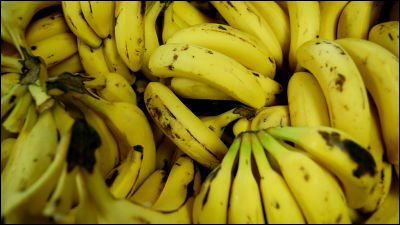Scientists discover clues to prevent 'banana apocalypse' caused by infectious disease

Bananas are one of the most popular fruits in the world, but in recent years the most popular varieties are those that are infected with
Virulence of banana wilt-causing fungal pathogen Fusarium oxysporum tropical race 4 is mediated by nitric oxide biosynthesis and accessory genes | Nature Microbiology
https://www.nature.com/articles/s41564-024-01779-7

The Banana Apocalypse is Near, but UMass Amherst Biologists Might Have Found a Key to Their Survival : UMass Amherst
https://www.umass.edu/news/article/banana-apocalypse-near-umass-amherst-biologists-might-have-found-key-their-survival
Banana apocalypse, part 2 – a genomicist explains the tricky genetics of the fungus devastating bananas worldwide
https://theconversation.com/banana-apocalypse-part-2-a-genomicist-explains-the-tricky-genetics-of-the-fungus-devastating-bananas-worldwide-236770
'Banana apocalypse' could be averted thanks to genetic breakthrough | Live Science
https://www.livescience.com/health/food-diet/banana-apocalypse-could-be-averted-thanks-to-genetic-breakthrough
Most of the bananas eaten at the time of writing are different varieties from those eaten by people several generations ago. The Gros Michel variety, which was mainly grown until the 1950s, was devastated by banana Panama disease caused by Fusarium oxysporum and is now almost completely abandoned except in some areas.
Fusarium oxysporum is a pathogen that causes a wilt disease that blocks the transport of water and nutrients by causing abnormalities in the vascular bundles that transport liquids within the plant. It infects more than 120 species of plants, and certain strains are known to infect humans . Fusarium oxysporum wilt diseases are named according to the lesions that appear on the crop, and the disease that occurs in bananas is called banana Panama disease.
In response to the banana Panama disease epidemics in the 1950s, farmers decided to promote another variety, the Cavendish , which was resistant to Fusarium oxysporum, and this led to the Cavendish becoming the predominant variety grown from the 1960s onwards.
However, in the 1990s, a different strain of Fusarium oxysporum to the one that had devastated Gros Michel became epidemic and has since spread to Cavendish bananas, once again threatening the global banana industry.

'We've been studying new outbreaks of banana Panama disease for over the past decade,' said
A 2010 study found that the genome of Fusarium oxysporum is divided into two parts: a 'core genome' that is shared by all lineages and codes for basic functions, and an 'accessory genome' that codes for specialized functions that infect specific plant hosts. Fusarium oxysporum has acquired the ability to infect a variety of plants by adapting the accessory genome.
A newly published study finds that the Fusarium oxysporum strain capable of infecting Cavendish , tropical race 4 (TR4) , has a different evolutionary origin and accessory genome than the strain that devastated Gros Michel.
By examining TR4's accessory genome, it was found that some of its genes release nitric oxide, a gas that is toxic to Cavendish, allowing it to successfully infect Cavendish and protecting itself by increasing the production of a chemical that detoxifies nitric oxide.

These findings suggest that designing ways to reduce the toxicity of nitric oxide may be an effective approach to protect the Cavendish banana, as well as cultivating a variety of bananas to create a more sustainable banana industry and identifying and developing banana varieties that are resistant to TR4.
Ma said consumers can help preserve banana and crop diversity by trying different banana varieties and buying other fruits and produce. 'By working together, scientists, farmers, industry and consumers around the world, we can avoid future shortages of bananas and other crops,' he said.
Related Posts:







